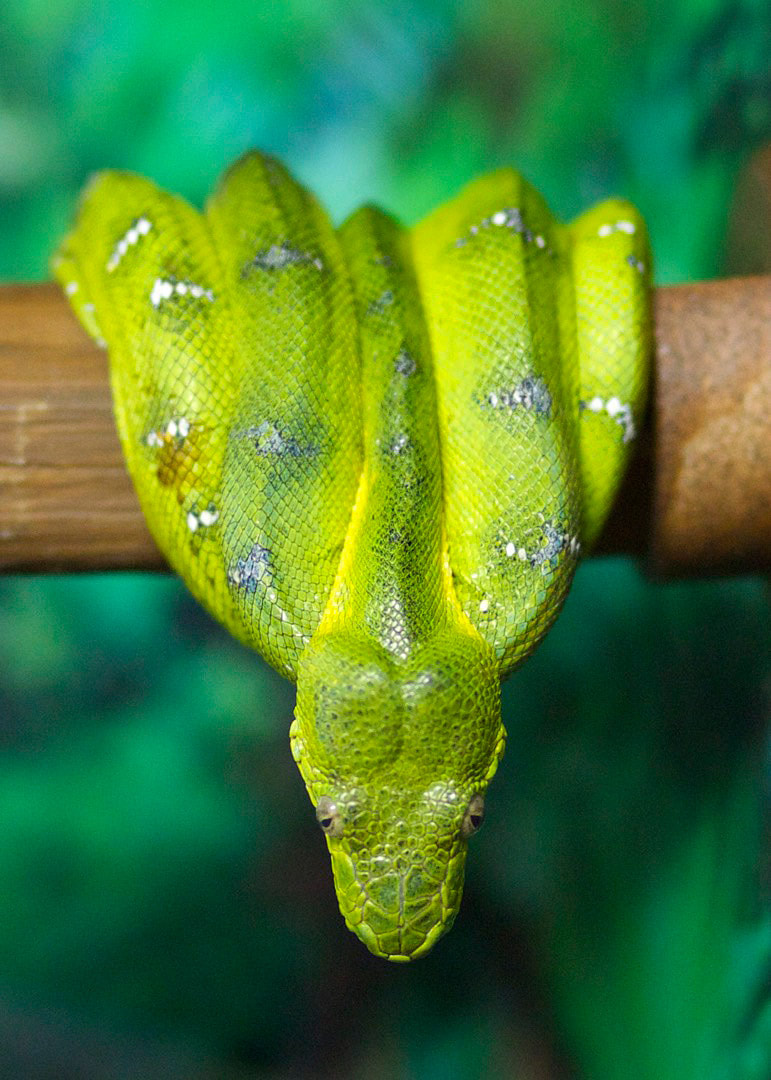Emerald Tree Boa (Corallus caninus)
|
Habitat: They live in the canopy of lowland tropical rainforests.
Range: They reside in the Amazon River Basin region of Colombia, Ecuador, Peru, Brazil, and from Venezuela to Surinam and the Guianas. Diet: The Emerald Tree Boa is a carnivore. They eat small mammals, some smaller bird species, lizards and frogs. The Emerald Tree Boa has a slow metabolism and may sometimes go months without eating. Lifespan: They can live up to 25 years in human care. Social Structure: Emerald Tree Boas are solitary outside the breeding season. They are ovoviviparous, meaning females hold the eggs internally, where they hatch and are expelled alongside live young. Emerald tree boas are pregnant for roughly 6 to 7 months before giving birth to 5 to 12 individuals. Status: Least Concern1 Other: Their prehensile tail can help them anchor to branches or assist in holding onto prey. 1 https://www.iucnredlist.org/ja/species/203208/2762180 |
Physical Description: Adults can grow to well over six feet in length. Females grow up to 4 pounds, and males 2-3 pounds. Their body is bright green with white zigzag striping on the dorsal surface that sometimes resembles lightning bolts. The ventral, or underside, is yellow. Young Emerald Tree Boas vary in color from light orange to brick red. They change into their trademark green over their first year of life. This process is known as ontogenetic coloration They have a bulky head with heat-sensing pits under the upper lip to help in locating warm-blooded prey. They have a thin neck and stout body. Emerald Tree Boas have a prehensile tail, meaning they can grasp things with it.
Emerald Tree Boas have highly developed front teeth that are proportionately larger than those of any other non-venomous snakes. Their front teeth are often incorrectly called “fangs”. Fangs are connected to venom glands, and Emerald Tree Boas are nonvenomous. They are arboreal, which means they are perfectly adapted for life in the trees, and can spend their entire lives above the ground. They are largely nocturnal. In the wild, they spend a great deal of time during the day coiled over a tree branch with their head right at the center. At night, Emerald Tree Boas remain coiled on the branch but will extend their head downward to wait patiently for something to eat. |
Rainforest Building open daily from 10:30 am to 3:30 pm









